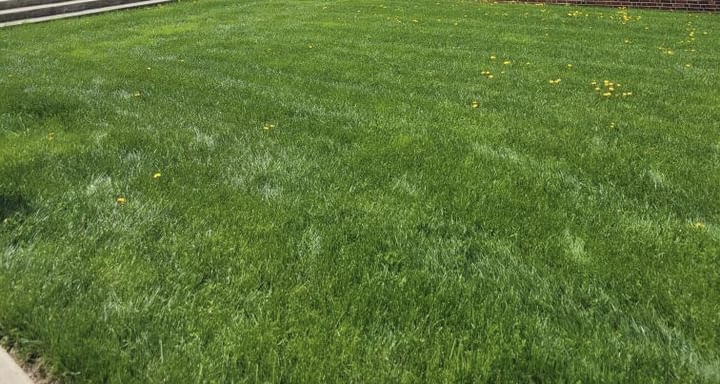Regan Russell, Nia Jones, Victoria Slade, Serena Drobnack, Wrileigh Bacon
Finding a starting point for this project quickly became the first obstacle that our group encountered. Each chapter of Henry David Thoreau’s Walden has unique paragraphs and changes that would work for this project, so picking just one was a difficult task. Originally our group picked Chapter 16 paragraph 13 and began analyzing and transcribing lines.This paragraph interested us because of the lines “What I have observed of the pond is no less true in ethics. It is the law of average. Such a rule of the two diameters not only guides us toward the sun in the system and the heart in man, but draw lines through the length and breadth of the aggregate of a man’s particular daily behaviors and waves of life into his coves and inlets, and where they intersect will be the height or depth of his character. Perhaps we need only to know how his shores trend and his adjacent country or circumstances, to infer his depth and concealed bottom.” As we began to work on the project we searched for images to utilize for the slides, but quickly realized that the necessary pictures were not available. We had chosen a paragraph that did not have pictures of different versions, we only had one picture to use. This was a large setback for the group, as it meant that we had to restart our entire project and pick a new paragraph to analyze.
Since we had already spent time analyzing Chapter 16 we chose to select a new paragraph within the same chapter. Our newly chosen paragraph was paragraph 4. This paragraph read as “When I strolled around the pond in misty weather I was sometimes amused by the primitive mode which some ruder fisherman had adopted. He would perhaps have placed alder branches over the narrow holes in the ice, which were four or five rods apart and an equal distance from the shore, and having fastened the end of the line to a stick to prevent its being pulled through, have passed the slack line over a twig of the alder, a foot or more above the ice, and tied a dry oak leaf to it, which, being pulled down, would show when he had a bite. These alders loomed through the mist at regular intervals as you walked half way round the pond.” To avoid another roadblock, our first step with the new paragraph was to locate photographs of the paragraph and make sure there were multiple versions available. We were able to find manuscript images of both version F and version G. While these images may be hard to read, the visible changes are still present.
Changes between these two versions are quickly seen, as the very first word in the paragraph changes between versions. Version F begins the paragraph with “Frequently when” but then all following versions begin with “When I”. This change could have been made to remove a limitation that comes with the word “frequently”, with the inclusion of the word the reader interprets that there is a limit or set number of times that the following action has occurred. Thoreau does not want to limit the reader’s interpretation of his words, so he does not disclose to the reader how many times he has strolled around the pond.
Pond in Winter Paragraph 4 Version F

Another significant change between versions is seen in the second sentence of the paragraph between version G and the Princeton version. Version G begins as “He would perhaps have placed an alder branch Over the narrow holes in the ice, which are which were four or 5 rods apart, and an equal distance from the shore, he would perhaps have placed an alder branch” and the Princeton version begins with “ He would perhaps have placed alder branches over the narrow holes in the ice, which were four or five rods apart and an equal distance from the shore,” Even at a glance it is clear that many changes have been made to the beginning of this sentence, as the Princeton version is visually quite shorter than version G. Version G uses words that are associated with the present tense such as “which are” and “he would”, both of these phrases are not featured in the Princeton version. The entire sentence is altered to in the past tense in the Princeton version, now using phrases such as “which were” and eliminating the phrase “he would”. This change to the past tense is an intentional move by Thoreau, the changes portray the nostalgic and daydreaming nature of his thoughts. The sentence is a description of a fisherman ice fishing that he may have seen while strolling by the pond. He does not participate in the fishing of the pond, just watching from afar and taking note of his process. Making this description occur entirely in the past tense shows the reader the extent to which Thoreau appreciates nature and eliminates the idea that Thoreau wishes to participate in the act.
Pond in Winter Paragrah 4 Version G

The paragraph that we chose to analyze truly showed a personal side of Throreau and showcased a small part of his personality. This interested us because it allows for the text to become relatable. While we were searching for a paragraph we read aloud numerous paragraphs that were hard to decipher. Some paragraphs appeared so complex on the surface that time would have been devoted analyzing the content, leaving no time to analyze the changes and choices that Thoreau made. Our chosen paragraph contained a level of complexity that we were able to decipher quickly and analyze the meaning while still leaving ample time to discuss the changes and choices made by him.
Thoreau’s intense appreciation for nature is shown through the way he describes the fisherman’s actions and the absence of his desire to participate in that activity and similar activities. This is part of the reason that our group gravitated toward this paragraph after our initial paragraph fell through. The initial pull to this paragraph came from the number of visible changes and words crossed off in between versions. But as we read through and discussed the contents of the paragraph we realized that this paragraph was an excellent example of intentional changes made by Thoreau to portray his internal thoughts and the overall message that he intended to send to the reader. His changes in this paragraph also portray his desire for some interpretation to be up to the reader. Thoreau makes many intentional points, but at times it is up to the reader to decide what he meant and decipher meanings from stories that can correlate to their own lives. Though we are all college students who may not be surrounded by nature daily, we all could find some piece of Walden that resonates with us and could be seen in our lives. The analysis of Walden and spending much time with paragraph 4 in chapter 16 has increased our understanding of Thoreau and his narrative choices throughout the text.

